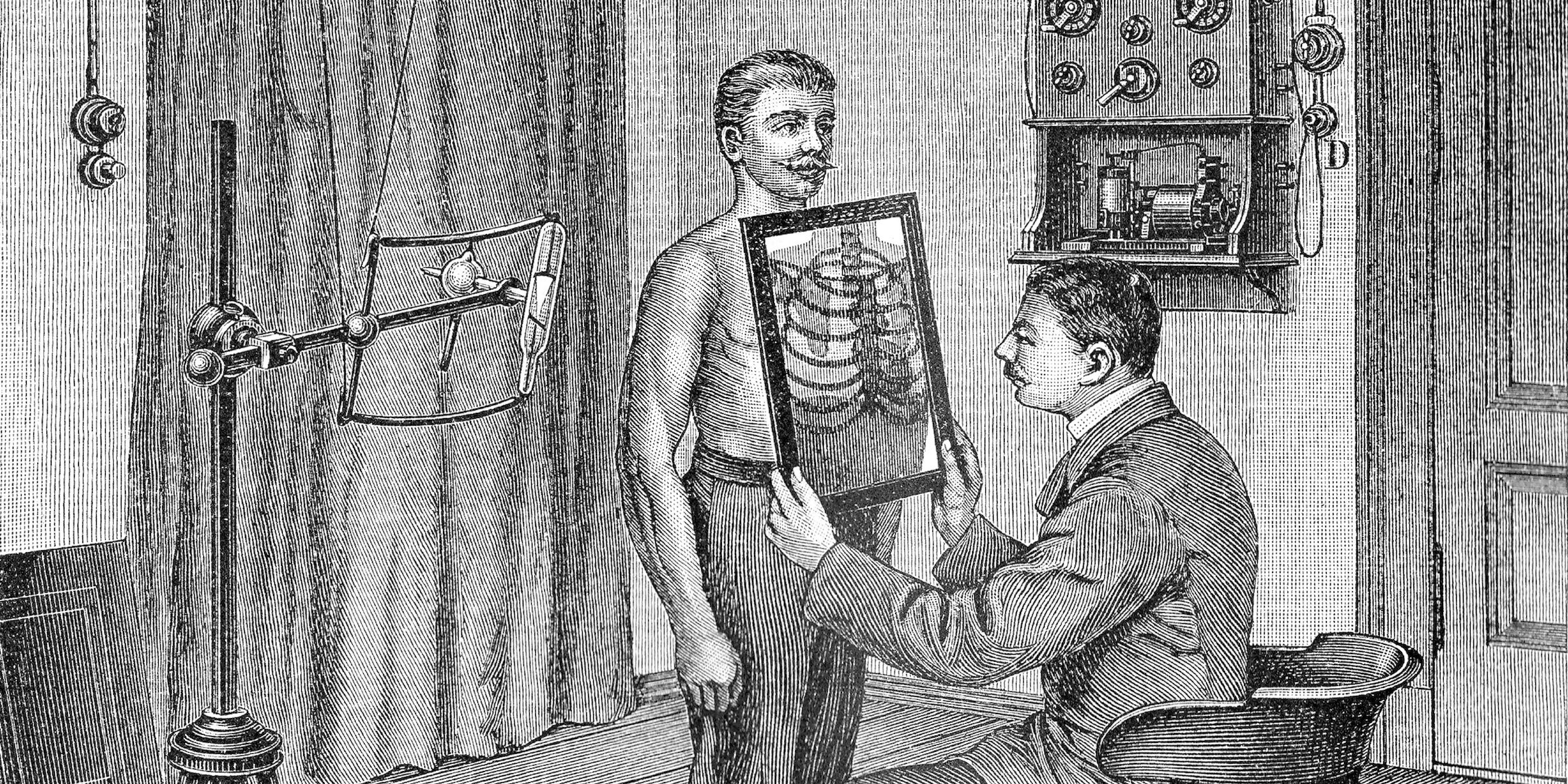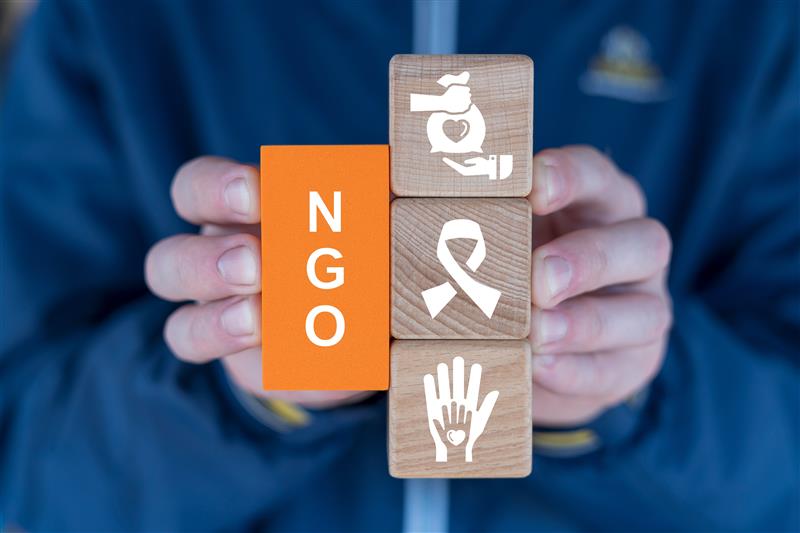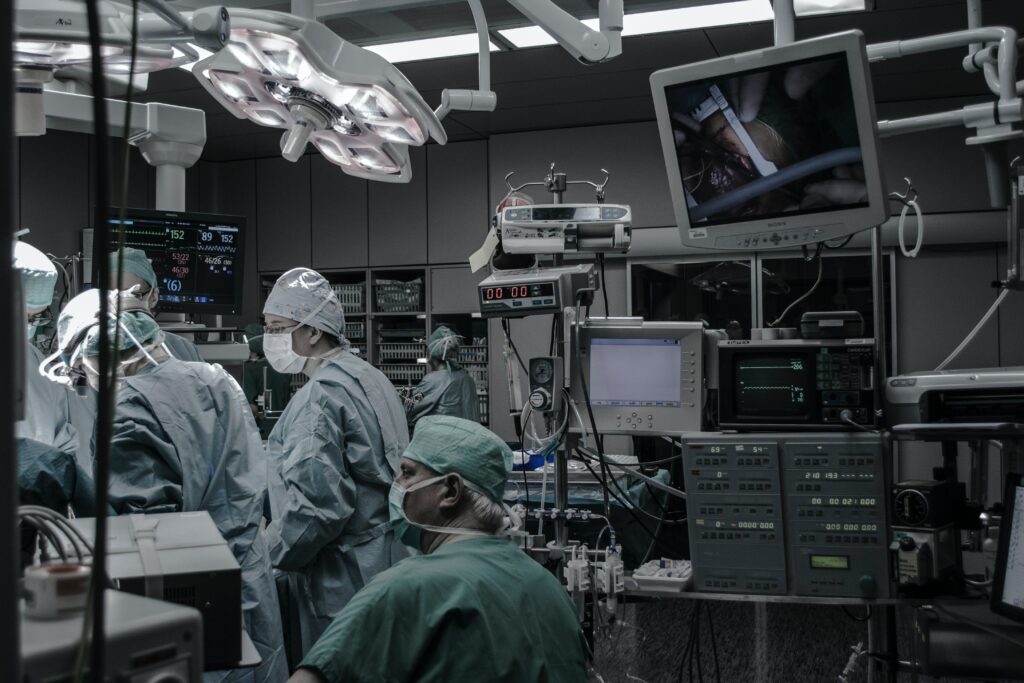Defining smart hospitals in 2023 – and searching for their existence in the UK with the NHS and enterprise tech.
1247: world population feasibly between the 360-500 million mark. The first incarnation of the Bethlem Royal Hospital was established in this year, with later centuries seeing it move around various London locations. The same passage of time saw the hospital become an asylum for mental health patients, notoriously acquiring its other name of Bedlam.
1914: Earth population somewhere under the two billion mark. The same year saw the founding of Alder Hey Children’s Hospital in Liverpool, UK. In 1944, the hospital would become the world’s first hospital to test penicillin and less than a decade later, the UK’s first to ever establish a neonatal unit.
1984: in response to Milton Keynes’ growing population, the Milton Keynes University Hospital (MKUH) is opened; the previous decade has seen a campaign in the Buckinghamshire city under the slogan of “Milton Keynes is Dying for a Hospital”. The world population in ‘84, meanwhile, nears the 4.8 billion mark.
A smart hospital isn’t a building with lots of smart technology inside; it’s a system where care is optimized by smart healthcare personnel – Claire Orchard, Milton Keynes University Hospital
Today, the planet’s population stands at eight billion. Almost 68-69 million of the global populace resides in the UK, a country reliant on the NHS for healthcare needs at any given minute of the day. Over 1.2 million people are employed by the health provider on a full-time basis, making the NHS the world’s ninth biggest employer. According to pre-pandemic figures, it manages over 1200 hospitals in the UK, offering around 141,000 beds to patients.
Post-pandemic, the NHS has made headlines with staffing issues arising from Brexit, COVID-19 pressures, declining funding and a very recent strike by nursing and ambulance staff. The UK is currently undergoing a winter of woe, begging the question of what solutions, if any, can be found in 2023.
An answer may or may not be found in headlines of a different sort, as coming from the tech press. Oracle, one of the NHS’ largest technology providers, recently swallowed up US healthcare giant Cerner with an extra $1.5bn profit enjoyed as a result. Microsoft continues to implement the AI software of big acquisition Nuance to power medical imaging and handling inbound calls from patients. Amazon is getting into telehealth within the US, and over in the UK, data-mining tech from Palantir will soon be used by NHS Digital to manage patient data, if it isn’t already.
But what about the reality, in that strange space where medical care and hyped technologies meet? How is the NHS answering the call as the United Kingdom continues crying out for better hospitals? ERP Today separates fact from fiction by looking at modern-day tech use in the establishments of Bethlem Royal, Alder Hey and MKUH. In these three hospitals, enterprise tech from the likes of Microsoft and Virgin Media O2 are helping the NHS as the enterprise celebrates its 75th anniversary, and bringing the smart hospital further into everyday British life.
Hospitals have been overspending on really complex projects over so many years – Gunnar Hansen, Haltian
Digital empathy
Come across the term “smart hospital”, and you’re likely to think of grand and brand new buildings usually to be found in APAC and the Middle East, decked out with smart beds and robot-assisted surgical units.
In the UK, the truth is far more prosaic, as no such smart hospitals are under construction in the country. Google “NHS smart hospital” and one of the top ranking hits is an article by myself from a few years ago. Not much has changed since the writing of that article as, like in that piece, the current picture painted for smart hospitals in the UK is one of slow augmentation to current centers as opposed to shiny new medical techtopias. In fact, in the NHS’ view, an abundance of tech isn’t even the most essential ingredient.
“A smart hospital isn’t a building with lots of smart technology inside; it’s a system where care is optimized by smart healthcare personnel who are supported by digital technology within a healthy environment,” says Claire Orchard, head of digital innovation at Milton Keynes University Hospital NHS Foundation Trust. “To understand how to build a smart hospital, we know that focusing on the whole is greater than focusing on the sum of parts. A smart hospital will enable all healthcare personnel to identify value within the system of care and collaborate to continually adapt as challenges emerge. A smart hospital will prioritize interventions based on where value and experience is needed most.”
Last spring saw MKUH partner with Finnish startup Haltian to pilot the latter’s digital twin solution, Empathic Building Smart Hospital. The pilot launched within the hospital’s Cancer Center before expanding later in 2022 to its cardiology unit, where both MKUH and Haltian can access and monitor building information and sensor data. The information from such data helps support NHS staff in utilizing space with maximum efficiency.
Speaking with ERP Today last year, Haltian chief product officer Gunnar Hansen explains that the digital twin tech can make smarter hospitals out of everyday ones.
“Hospitals are (very interested) in this kind of technology because they have been overspending on really complex projects over so many years. I think what they like with this system is that we deliver results and we can also make an old hospital ‘smart’.”
The tech has the ability to anonymously track patients as they use the space of MKUH. If one carries a virus and accesses different parts of the hospital, sensors can plot the patient’s journey and relay the information to cleaners, thus minimizing potential virus spread.
We want to improve the way the NHS is providing services to the population – Sergio Budkin, Virgin Media O2 Business
Empathic Building also keeps track of objects, such as workstations on wheels (WoWs). Ubiquitous in hospitals around the world, these computer carts can often get left behind in rooms following use, meaning colleagues have to hunt down a WoW when they aren’t brought back to a common location. Not an ideal situation in the large space of a hospital, but it’s one which Haltian seems to have found a solution for.
“The platform has enabled staff to find one another and equipment faster, as well as discuss new processes around medicines management and smart cleaning schedules,” reveals Orchard. “[It] is intuitive and simple to understand, regardless of a person’s technical skillset, and the user interface organically fosters a sense of togetherness between teams.”
“It’s all about the user experience for all users of the building, from patients to staff,” says Hansen. “Our dream is that the patient receives a letter to come to the hospital; they navigate themselves to where they need to go, and this ensures they can do that with fewer guiding hands in the building.”
Less pressure on personnel is always a boon in healthcare. As Orchard tells ERP Today, challenges within MKUH can be seen where “clinical activity is rising faster than the rate in which our workforce is growing”.
“Surrounding this, our buildings are aging and do not provide an optimum experience for patients,” continues the innovation lead. “Our smart hospital journey will start by addressing these challenges first [with] automation to reduce administrative tasks, communication to improve collaboration between people, and safety to improve wellness. We’ll look to harness this data to automate processes that support our workforce and create personalized care environments for our patients.”
The good news for technology providers is that, according to Hansen, working with the NHS involves far less red tape than with Scandinavian health providers. Haltian’s deal with MKUH only took a few months to arrange and implement. So much for Nordic efficiency.
From 1930 to now: Zero G to 5G
“In the end, we want to improve the way the NHS is providing services to the population.”
So says Sergio Budkin, director of market development (AI, data analytics and 5G IoT) at Virgin Media O2 Business. Last summer, Budkin and company helped the Bethlem Royal become the UK’s first 5G-connected hospital. Not bad considering the establishment has been in its current location for 93 years.
You reduce waste…and with remote health care, you reduce commuting time. All of that has an impact – Sergio Budkin, Virgin Media O2 Business
Virgin Media O2 Business switched on the hospital with South London and Maudsley NHS Foundation Trust, provider of the most extensive portfolio of mental health services in the UK. The switch-on is part of Maudsley Digital Lab’s series of digital health and innovation trials funded by NHS Digital, with the private 5G network providing dedicated connectivity for digital health use cases for both clinicians and patients.
Enabled across some of the wards in the Bethlem Royal Hospital are Maudsley Smart Hospital and Maudsley Smart Pharmacy trials; these include near real-time connectivity to power e-Observations, where clinicians use handheld devices to update patient records. 5G also allows link-up for smart devices and monitoring to reduce expensive medicine waste and monitor the air quality in wards. An AR tool allows hospital IT teams access to expert maintenance support in other hospitals, and similarly to MKUH, better spatial insights through AI-analyzed heat maps of crowd movement analysis using CCTV footage.
Budkin reveals to ERP Today that there are also plans to test use cases for robotics, tech which can operate thanks to the super low latency and high bandwidth offered by 5G. Again, that’s an impressive feat for one of the UK’s oldest hospitals.
“The beauty of this technology is that it’s designed so you don’t need to mess with the physical space. You only need to provide an antenna and connectivity to radiate the signal,” the director adds.
“We want to help the NHS do more with the same amount of current resources. We also want to make things more accessible and easier to use for patients and clinicians, and use technology to prevent illness from developing.
“Finally, there’s the underlying topic of sustainability, because you reduce waste, do more with the same amount of resources, reduce energy consumption, and with remote health care, you reduce comuting time. All of that has an impact.”
Hospitals without walls
Watchers of enterprise medtech may be familiar with Alder Hey Children’s Hospital. Microsoft has solid footing in the hospital’s Innovation Centre, with recent surgical uses of Redmond’s HoloLens 2 smartglasses, alongside AI algorithms designed by the company to predict bed space utilization.
Being at home is better for most people than being alone in a hospital bed when recovering from illness – Umang Patel, Microsoft UK
2022 saw Microsoft UK, Alder Hey Children’s NHS Foundation Trust and tech startup Mindwave co-develop AlderHey@nywhere (AHAW), a digital health platform providing a hybrid point of access and patient care, with a particular focus on preventative healthcare. The solution is designed to create, in Alder Hey’s words, a “hospital without walls”. It echoes a view from Budkin that the smartest thing about smart healthcare is “you not needing to go to a hospital [and] staying there the least amount you need”. Anybody who’s waited overnight in an A&E waiting room will probably agree with this view (and perhaps wonder why the NHS App doesn’t allow to check in upon arrival to a hospital, to be called back later when a doctor is available).
Away from this digression, and going back to AHAW, Umang Patel, chief clinical information officer, Microsoft UK, believes prevention is better than a cure, “and being at home is better for most people than being alone in a hospital bed when recovering from illness”.
“We won’t ever prevent all illness or injury, and at some point in every serious or chronic illness, the patient will have to stay in a hospital,” he continues. “Our sights have to be set on reducing the need where we can in the first place, but also on making sure that patients can flow in and out of different settings easily, safely and efficiently. This is where tech, especially co-created tech, can help in the here and now as we are seeing with AHAW.”
For Patel, in the context of healthcare, ‘smart’ needs to be “just a little better than today”, and, crucially, designed with scalability and future-proofing in mind.
The NHS’ work with tech firms has shown just what’s possible together – Jacob West, Microsoft UK
“We don’t need hospitals to adapt to be fully AI controlled with robots on reception, but we do need to design them to have the right foundations for this next phase of healthcare. That means not only ensuring hospitals have simple things like a good network and enough power, but also credentials such as sustainable lighting and scalable computing assets.
“Smart hospitals also need to be part of new smart systems that are being born alongside greater integrated care. Being smart means being able to be a command center for the ICS, allowing safe virtual wards and having enough flexible space to use in an emergency.”
“To echo Umang,” says Jacob West, managing director, healthcare and life sciences at Microsoft UK, “for now, a smart hospital is one that is equipped with a good network with sustainable power and scalable resources. But the NHS’ work with tech firms has shown just what’s possible together.”
What enterprise tech needs to remember when entering the healthcare market, though, is that a different sort of approach is needed to the norm. Post-pandemic, Patel argues, it’s vital for hospitals and technology partners to survey frontline workers in health on pragmatic solutions that resolve the most pressing situations for them and their patients.
“As we enter into a new stage of healthcare delivery, it’s vital that we canvass opinion from users of the tech from all sides,” says the CCO. “It’s also much harder in healthcare than in normal consumer product design to do this.
“In retail, for example, it’s usually a transaction that happens in a happy or at least neutral state. In healthcare, patients are often worried or concerned and professionals are often time-scarce, so the tech needs to be able to work for both – without adding stress or getting in the way of patient care.”
In West’s view, the pandemic, unsurprisingly, was a game changer for tech in healthcare. The MD points to the use of mixed reality (MR) headsets in Alder Hey and Imperial College NHS Healthcare Trust to enable remote monitoring, and live 3D capture which helped NHS Scotland bring specialized treatment to some of the most remote parts of Scotland, without the need for travel. Call it another plane of reality waiting for 5G to fully take off before this medical metaverse can manifest in the NHS.
It’s vital that we canvas opinion from users of the tech from all sides – Umang Patel, Microsoft UK
“We’ve already seen how AI, MR and various other technologies can be used to help the NHS recover from the COVID-19 pandemic to free up hospital space and deliver more connected, integrated care for patients.
“The more we can do this,” West concludes, “the more we can aim to reduce the time people need to spend in a hospital through the use of technology, while also ensuring that when they are there, the right measures are in place so clinicians can effectively deliver the care they deserve.”
Perhaps, then, the smartest hospital you can visit is not a gleaming techtopia built out of bricks and mortar. Instead, if AlderHey@nywhere is anything to go by, it’s one which you don’t visit, an ethereal concept which instead comes to you, making your home the hospital.
That would certainly solve the NHS bed problem – hopefully in a matter of decades or, even better, years, as opposed to the passing of another century.




